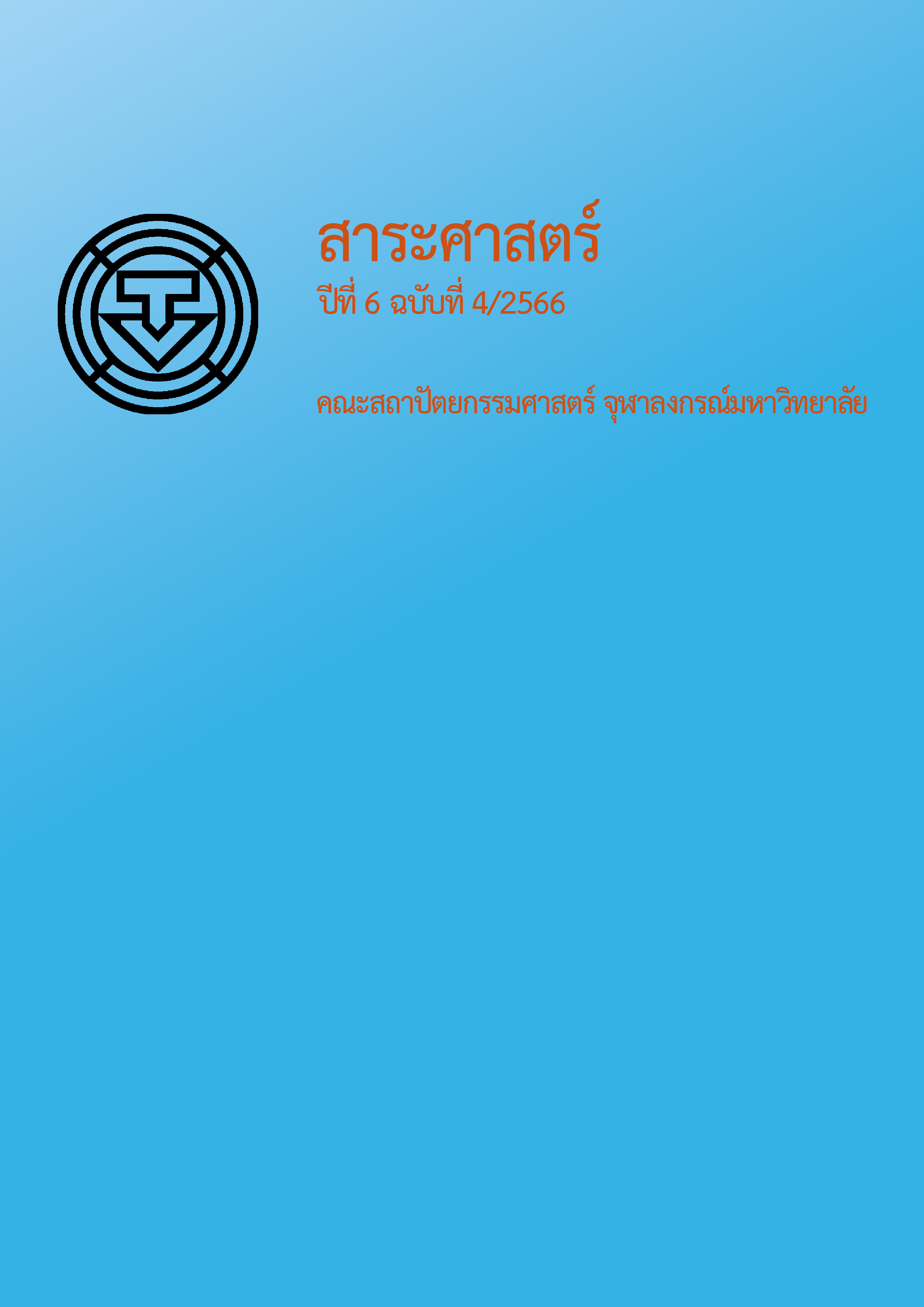The Development of Reinforced Concrete in Auguste Perret’s Architecture
Main Article Content
Abstract
This article presents the development of reinforced concrete, studying the ideas and architectural works of the French architect Auguste Perret in the context of France. It explores theories, data, and social and cultural factors that have influenced and impacted architectural development. The study investigates the progress of architectural works using reinforced concrete, which has different processes compared to the late 19th century. Additionally, it examines the development of non-decorative structures, with reinforced concrete being essential and accepted by architects and engineers for construction in the building's structural part.
Reinforced concrete is a part of social connections, and Perret's works have had a significant role and influence in Europe, consequently impacting architectural styles since the early 20th century. Furthermore, it has affected the design and construction process, resulting in an acceptance of using proportions similar to Perret's design. As for the design teams, they have become more closely-knit and have improved their design processes, such as creating open structural elements, exposing surfaces, and avoiding concrete coverings. This is accompanied by an understanding of concrete's properties that expanded its capabilities and preserved its original limitations. For example, it allows for more freedom in floor plan designs, wider open walls, easy showcasing of columns, and the possibility of rooftop gardens. In terms of construction equipment, methods have been developed to match the desired designs, conforming to predefined ideas, leading to patents being issued across Europe and proper legal development. Organizations certify safety standards, which has boosted confidence in and usage of reinforced concrete buildings among people. Consequently, reinforced concrete structures have gained a more significant role, moving beyond just supporting functional spaces as previously envisioned by architects.
Article Details
References
ใจรัก จันทร์สิน. (2549). สถาปัตยกรรมสมัยใหม่ของกลุ่มสถาปนิกไทยรุ่นบุกเบิก พ.ศ.2459-พ.ศ.2508 [วิทยานิพนธ์ปริญญามหาบัณฑิต ไม่ได้ตีพิมพ์]. มหาวิทยาลัยศิลปากร.
ชมชน ฟูสินไพบูลย์. (2559, มกราคม-ธันวาคม). ประวัติศาสตร์นิพนธ์ด้านสถาปัตยกรรมสมัยใหม่ในประเทศไทย. หน้าจั่ว : ว่าด้วยประวัติศาสตร์ สถาปัตยกรรมและสถาปัตยกรรมไทย, 13, 154-173.
ต้นข้าว ปาณินท์. (2561). ปฐมบท ทฤษฎีสถาปัตยกรรม. ลายเส้น.
ธนธร กิตติกานต์. (2563). ประวัติศาสตร์สถาปัตยกรรมตะวันตก 1400-1900 : ว่าด้วยการพัฒนารากฐานความคิดแบบโมเดิร์น. มติชน.
ธนธร กิตติกานต์. (2564). ประวัติศาสตร์สถาปัตยกรรมโมเดิร์น : ว่าด้วยพัฒนาการทางสังคมและเศรษฐกิจในศตวรรษที่ 20. อัมรินทร์.
ภาณุวัฒน์ จ้อยกลัด และสุนิติ สุภาพ. (2557, มกราคม-กุมภาพันธ์). คอนกรีตเสริมเหล็ก จากแหล่งกำเนิดสู่สยามประเทศ. วิศวกรรมสาร, 67(1), 17-25.
สันต์ สุวัจฉราภินันท์. (2563). 13 บทวิจารณ์สถาปัตยกรรม. ภาพพิมพ์.
อัศนีย์ ชูอรุณ. (2535). ประติมากรรม และสถาปัตยกรรมสมัยใหม่. โอเอสพริ้นติ้งเฮ้าส์.Campbell, Louise. (2014). Perret versus Le Corbusier building for art in the 1920s. Kunst og Kultur Oslo, 97(4), 209.
Cohen, Jean Louis. (2011). The future of architecture since 1889 a worldwide history. Phaidon Press.
Collins, Peter. (2004). Concrete: The vision of a new architecture. The University Press Glasgow.
Favole, Paolo. (2011). The story of contemporary architecture. Prestel
Forty, Adrian. (2012). Concrete and culture: A material history. University of Maryland.
Frampton, Kenneth. (2020). World of art modern architecture. The MIT Press.
Giedion, Sigfried. (1995). Building in France building in iron building in Ferroconcrete. Oxford University Press.
Handsbridge, John. (1999). Graphic history of architecture. Hennessey & Ingalls.
Hubsch, Heinrich, Wiegmann, Rudolf, Rosenthal, Carl Albert, Wolff, Johann Heinrich, & Botticher, Carl Gottlieb Wilhelm. (1992). In what style should we build? The German debate on architectural style (Wolfgang Herrmann, Trans.). The Getty Center for the History of Art and the Humanities.
Kostof, Spiro. (1985). A history of architecture settings and rituals. Oxford University Press.
Oma. (2023). Auguste Perret: Huit chefs d’oeuvre! https://www.oma.com/projects/auguste-perret-huit-chefs-d-oeuvre-
Perret, Auguste, & Copans, Richard. (2016, March 8). Arquitectura paisaje y patrimonio: The Church of Notre Dame du Raincy [VDO]. Youtube. https://www.youtube.com/watch?v=E0lAz_9xffQ
Powell, Kenneth. (2021). The great builders. Thames & Hudson.
Rowe, Colin. (2018). The mathematics of the ideal villa and other essays. The MIT Press.
Tafuri, Manfredo, & Co, Francesco Dal. (1976). Modern architecture 1: History of world architecture. Electa.


